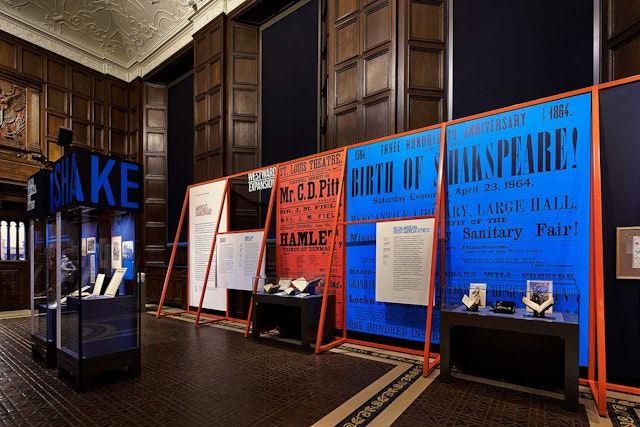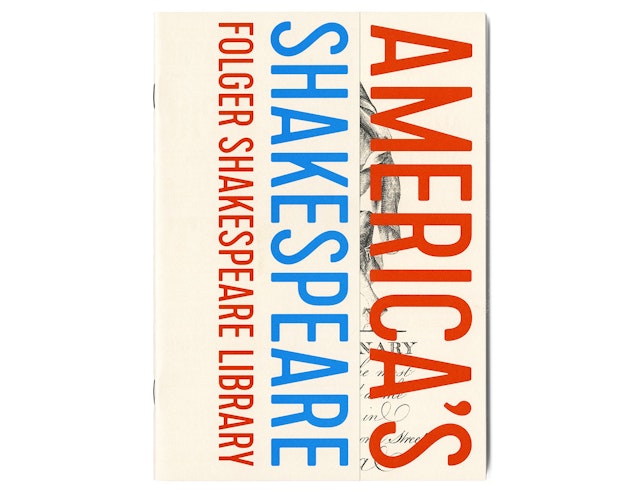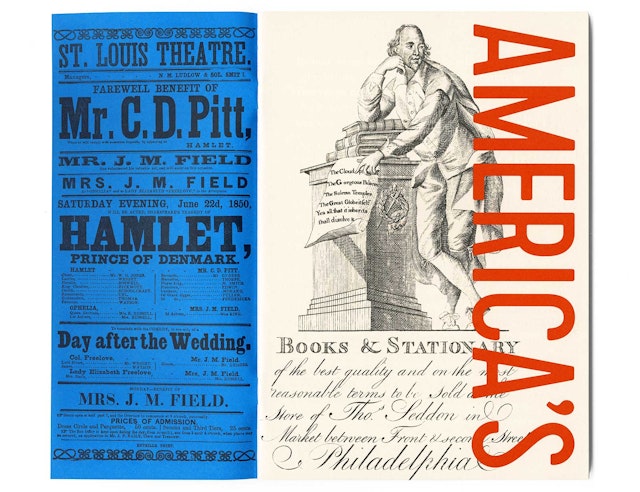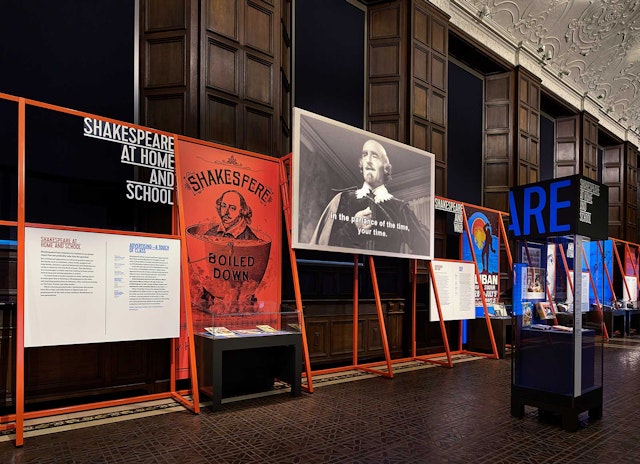




The exhibition design uses a theatrical approach to transform the dramatic historical setting of the Folger’s Great Hall.





What makes the words, ideas and characters of William Shakespeare—an Englishman—so central to American life and thought? This question is explored in America’s Shakespeare, an exhibition presented at the Folger Shakespeare Library in Washington, D.C., that looks at the ways Americans have made The Bard their own. Pentagram has created a unique design for the exhibition that uses elements inspired by stagecraft, film and vernacular American architecture, integrated into the rich interiors of the Folger’s landmark Great Hall.
The exhibition is the second in “The Wonder of Will,” a yearlong celebration at the Folger that commemorates of the 400th anniversary of Shakespeare’s death (1616) with a series of special events, exhibitions, performances and other programming. The new show directly follows Shakespeare, Life of an Icon, a portrait of The Bard in his own time as told through important manuscripts and printed works. Pentagram developed the design of both exhibitions as back-to-back shows, and America’s Shakespeare adapts the structures used in the earlier exhibition to display the new content. The approach allowed for a fluid transition during the anniversary’s accelerated schedule.
The designers worked closely on the design with the exhibition curator Georgianna Ziegler. America’s founders left Britain behind, but took Shakespeare with them. The show examines how the U.S. developed its own interpretation of Shakespeare in a way that made sense to the American audience. A broad range of items traces Shakespeare’s changing role in American culture, from the westward expansion and the Civil War to stage, screen, and radio, debates over war, politics and race, and the latest forms of digital media. The story is told through rare letters, costumes, film and stage performances, examples of iconic writers’ and politicians’ favorite quotes and passages from Shakespeare, and even advertisements that use Shakespeare to sell. (The first representation of Shakespeare in America was a 1787 ad for a Philadelphia stationer.)
As with the earlier exhibition, the challenge was to create an engaging and immersive environment built around artifacts displayed in vitrines. Another challenge was the Folger space itself: Designed by the architect Paul Cret (who also designed the original Barnes Foundation building in Merion, Pennsylvania), the 1932 building houses its main gallery in the Great Hall, an expansive Tudor-inspired interior of dark oak panels offset by a vaulted white ornamental ceiling.
Inspired by stagecraft, the exhibition design uses a theatrical approach to transform the dramatic historical setting. A structure of scaffolding made of bright red steel tubing has been installed around the walls of the gallery and suggests the framework of a stage set. Objects and artifacts are displayed in the Library's existing vitrines, which nest within the structures. In the earlier exhibition, the scaffolding alluded to the Tudor architecture of Shakespeare's time. In the new show, the framework suggests the industrial architecture of modern America.
The American context is also conveyed through big, bold graphics and the patriotic palette of red, white and blue. Panels in the structures enlarge playbills and posters to billboard-size proportions. In the center of the hall, a series of tall vitrines display costumes and other artifacts, with the tops of the cases wrapped in a supergraphic "Shakespeare" set in the contemporary sans serif Cervo. Secondary typography is set in Fakt Slab.
In Shakespeare, Life of an Icon, the designers transformed the Hall’s ornate ceiling into a dynamic installation with animated projections. The exhibition shifts the focus to the side walls, where sequences from film adaptations of Shakespeare are projected on massive screens attached to the framework structures. Selections range from Richard III (1912) the first feature-length film based on a Shakespearean play, to the classic 1961 film version of the musical West Side Story, to “Atomic Shakespeare,” a 1986 episode of the TV series Moonlighting that riffs on The Taming of the Shrew. The projectors are still located on the top of the center vitrines, but instead of pointing upwards are now directed at the walls.
